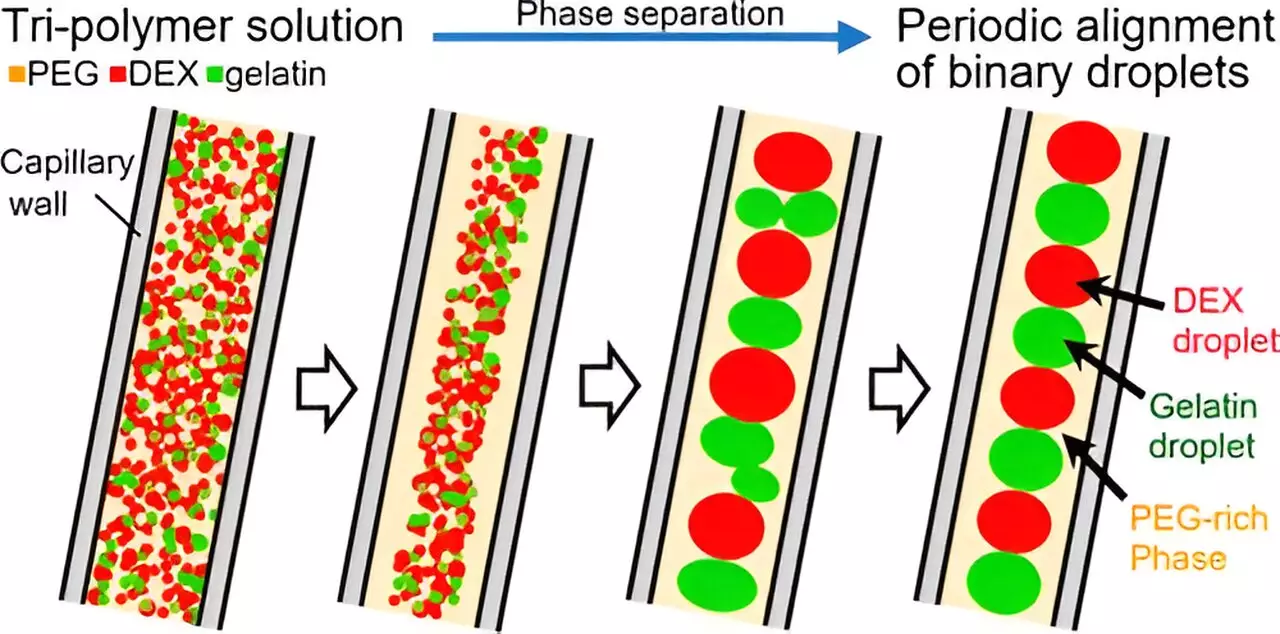Polymer systems have the ability to induce emulsion or microdroplets through mechanical mixing, which serve as an intermediate state of macroscopic phase separation. However, the nonuniformity in size and random spatial arrangement of these droplets present a challenge in various applications. Researchers have attempted to stabilize the microdroplets by lowering the temperature rapidly, but this method has not been successful in improving the uniformity of the droplets. The production of homogeneous droplets with consistent arrangement could be beneficial for drug delivery and the creation of synthesis cells.
A recent study published in ACS Macro Letters by a research team led by Ph.D. student Mayu Shono from Doshisha University revealed a novel approach for the spontaneous generation of homogeneous microdroplets. The researchers observed that a homogeneous spatial pattern of microdroplets is generated through phase separation of a polymer solution within a glass capillary tube. Interestingly, the pattern of microdroplets remained stable for hours without any external energy or material exchange, setting it apart from existing systems.
In the experiments conducted by the research team, they prepared a tripolymer solution containing polyethylene-glycol (PEG) mixed with dextran (DEX) and gelatin. The solution was drawn into a glass capillary tube coated with PEG, where the three phases separated over time. The DEX and gelatin droplets aligned themselves in a periodic pattern within the PEG phase, forming a self-organized arrangement without the need for additional intervention.
The researchers utilized numerical simulation to understand the observed pattern by modifying the theoretical model with the Cahn-Hilliard equation. This equation describes the time-dependent change in the spatial pattern of phase separation in a mixture of three different polymers. By achieving stable micropatterns through phase separation, the researchers overcame the challenge of nonuniform microdroplets that tend to collapse or disappear over time.
The methodology developed by the research team offers superior advantages over current microfluidic techniques in maintaining uniform droplets for extended periods. The stable micropatterns could provide valuable insights into the self-assembly of biological molecules, which could further aid in targeted drug delivery and the production of desired macromolecules using protocells.
The research conducted by Mayu Shono and her team at Doshisha University presents a significant advancement in the generation of uniform microdroplets for various applications including drug delivery and cellular synthesis. The spontaneous self-organization of microdroplets through phase separation offers a promising approach to overcome the challenges associated with nonuniform droplet sizes and random spatial arrangement. This research paves the way for further investigations into the self-assembly of biological molecules and the development of innovative drug delivery systems.


Leave a Reply